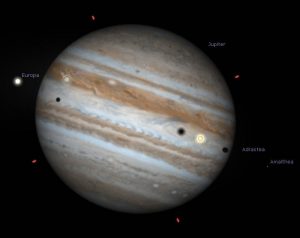Understanding Meteor Showers
Meteor showers are one easiest celestial delights to observe with no equipment, little experience or knowledge, none of which make them any less delightful.
I aim to give you some of the background knowledge the will deepen your appreciation of this regular celestial delight.
I have also established a Facebook page Australian Meteor Shower Reports for easy interaction of your experience of meteor showers.
There are however some standard terms you will need to know for your understanding while watching and reporting meteor showers.
Radiant: The point in the sky that you can trace the path of meteors back too.
ZHR: The maximum rate of meteors under ideal conditions if the radiant was directly overhead.
Parent Body: The comet or asteroid that has shed the material entering our atmosphere.
Sporadic Meteors: These are meteors that are not associated with a particular meteor stream and on average there are about 6 per hour on any given night.
Peak: The period during which there is a dramatically increased rate of meteors as distinguished from the build up and tail out of the shower.
How to observe Meteor Showers
While all you need to do is simply look up and be patient, there are a few tips for a successful session viewing meteor showers.
Darkness – Find a dark location where your eyes can become dark adapted as this will dramatically increase the number of meteors you see, as there are often many faint meteors to every bright one. 20 minutes as a minimum to achieve that dark adaption.
Comfort – Get in a comfortable position where you can be reclined at least for 1 hour, warm clothes is usually a requirement, but in the tropics it can equally be insect repellant.
Time & Timing – As alluded to above how much time you spend observing the meteor shower makes a big difference to your success. All to often people will go outside for 10 minutes, see nothing and declare the observation a failure. This is a combination of Dark adaption and how a meteor stream interacts with the atmosphere. That brings us to timing, if the peak of a meteor shower is stated as say 60/hr, don’t expect a Meteor every minute or so, they typically come in bursts or Filaments of perhaps 3 or 4 in a minute or two. So as soon as you see one, be alert for more close by !
Where to look – Every meteor shower has a radiant and this is the natural place to look, hoping to spot meteors. However the best place to look is as far above the radiant as you can, while still having the radiant in your peripheral (side) vision. In fact if there are two off you, the 2nd person can be looking in the OPPOSITE direction of the radiant as many of the long travelling meteors can appear in this part of the sky.
Attention to Detail – Take the time to trace back the path of the meteor to determine the radiant to see if its part of the meteor stream you are observing. The relative speed, colour and brightness of the meteors is also an indication of its parent meteor stream.
Record & Share – Record and report your findings on our Facebook Page so we can learn more about these showers and inspire others
What are Meteor Showers ?
Source – As comets in particular come close to the sun they begin to sublimate ice to a gas, which in turn carries off pieces of the comet into the Coma of the comet and in the more active comets into the tail. When this stream of material is laid down between the Sun and the orbit of the earth, this is not a static pattern, it changes with time. Over a period of often 100’s of years the “Solar Wind” pushes this material out into the orbit of the earth.
Streams and filaments – Meteor showers come at a regular time each year as the earth intersects the stream that is currently being pushed into our orbit. This is quite predictable in it’s timing, however there can be filaments within this stream, much like the filaments of smoke in a smoke filled room (for those you who remember smoke filled rooms) 
Rates – These filaments mentioned above can dramatically increase the rates over a period of hours during the meteor shower, they can be predicted from the use of “Space Radar” using radio telescopes. This also means that the high rate filaments can be over in the space of an hour or so and you need to be able to observe the shower at that time to see these bursts.
Colour & brightness – Colour is an indication of the chemical composition of the rock and ice being vaporised in our Atmosphere. Brightness is an indiction of the size of the meteor. Some showers are noted for both the particular colour and brightness of the meteors.
Speed – The speed that you see a meteor streaking across the sky is dependant on both the inherent speed the steam is travelling through the vacuum of space and whether it is catching up with the earth in the evening sky or we are sweeping it up in our path as the earth rotates into the morning sky. This will be expressed in the figures quoted for the particular meteor shower and will be an identifying feature for your observations.
Above all, get out and enjoy the experience. You will either sleep well after a satisfying late night session or start you day inspired if you rise early for and early morning shower. We look forward to hearing about your meteor shower experience.


